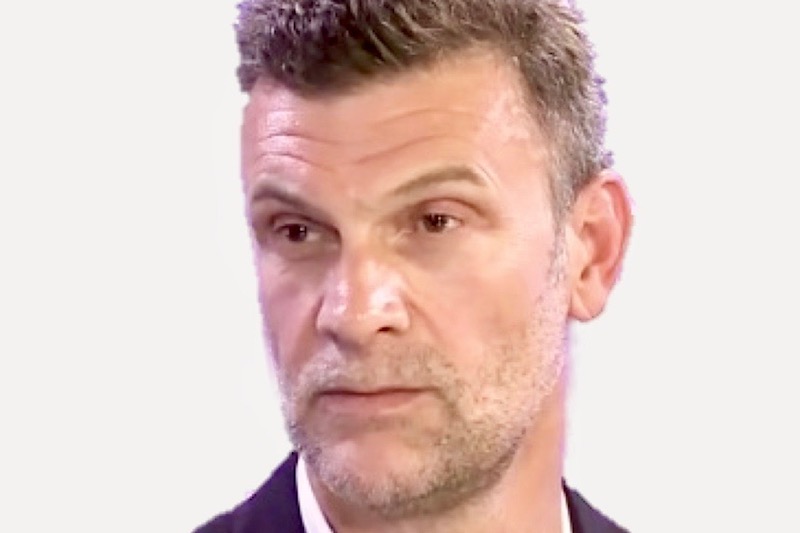The recent revelations about disgraced professional football coach Barry Bennell, who has now been charged with eight new offences, show how adults with a perceived level of power and influence can exploit their position to sexually abuse and silence children.
Child sexual abuse is an appalling crime that destroys the lives of everyone involved. It is a crime that has its origins in the thought processes of the perpetrators, and understanding this is the key to understanding and preventing child sexual abuse.
Child sexual abuse is an appalling crime that destroys the lives of everyone involved. It is a crime that has its origins in the thought processes of the perpetrators, and understanding this is the key to understanding and preventing child sexual abuse. ![]()
In March 2015, the government declared child sexual abuse a national threat and unveiled a series of new measures to combat the risk it poses to the well-being of children and society in general.
The same year, the Independent Inquiry into Child Sexual Abuse (IICSA) was set up to investigate negligent and incompetent practice within public bodies. But at the start of 2017 the early optimism surrounding the inquiry has gone: it is on its fourth chair and mired in controversy having lost the support of many of the victims’ groups it originally expected to work with.
In 2014, in response to a significant rise in the number of cases being reported, the police established Operation Hydrant. This was not to investigate specific crimes but to collate and advise investigations nationally. Fast forward nearly two years and the rapid rise in the number of investigations is in danger of overwhelming even the best prepared force. Meanwhile, the police service throughout the country has been heavily criticised for its handling of “non-recent” and new investigations.
Variable quality of investigations
Following stringent budget cuts all forces are short of money and experienced staff. To cope with the rise in child sexual abuse investigations, they have adopted a strategy of simply moving officers from other policing duties. Unfortunately, this approach doesn’t work with child sexual abuse cases. Most reported cases tend to involve victims that know and are acquainted with their abusers. This relationship means that they often don’t see themselves as victims of abuse, which has an impact upon how they present to and interact with the police.
Perpetrators of child sexual abuse often exploit this relationship and manipulate their victims to prevent arrest and frustrate any investigation. This complexity requires the investigative skills and knowledge of specialist and experienced staff and currently there is not enough to deal with the demand.
To compound this, several forces have begun to move away from having specialists towards more generalist roles that can deal with a wider range of crime. This allows forces to do more with less staff and ultimately save money. Yet child sexual abuse remains largely misunderstood by non-specialist staff and by senior figures in the police. This impacts upon the police’s ability to investigate allegations and design effective preventative measures.
Inside the mind of the perpetrator
Many of the accepted theories regarding the behaviour of child sexual abusers have been known for well over two decades, yet they are rarely used in the training of frontline child protection professionals and so aren’t embedded in their practice.
Perpetrators develop unique psychological vulnerabilities from the significant events that occur during their lives, which shape them as human beings albeit deeply flawed ones.
A common myth, for example, is that the behaviour of child sexual perpetrators is solely motivated by their need for sexual gratification. In fact, there is a substantial body of work that points to perpetrators having multifaceted motivations. It is not just about a need for sex and they are often seeking to fulfil other intrinsic needs such as a need for autonomy, power and control.
Perpetrators develop unique psychological vulnerabilities from the significant events that occur during their lives, which shape them as human beings albeit deeply flawed ones.
These vulnerabilities allow the development of a unique view of children and the world and can often explain key aspects of the offending behaviour. For example, the content and context of sexual activity early in childhood can lead some perpetrators to constantly strive to recreate these events in later life.
These events can also lead to the development of deviant sexual thoughts about children which perpetrators combine with masturbation. When this behaviour is constantly repeated, it strengthens the bond between their thoughts and the pleasure experienced during orgasm. So the behaviour becomes ingrained and this conditioning process is how the perpetrators maintain their deviant arousal.
Once a person has conditioned themselves in this way over a period of time they can suffer from extreme anxiety, even though they may never actually commit an offence in law. To cope they try to make it right in their own mind by distorting their thinking. If they then go on to abuse, they may tell themselves that if a child does not disclose the abuse this is because the child secretly enjoyed the experience. This is how perpetrators make things right in their own mind and this allows them to continue in the same vein.
Keeping children safe
We must balance our need to attribute blame to the institutions we see as having failed to protect children in the past with a greater understanding of the perpetrators themselves. Such understanding can help dispel myths, challenge accepted thinking and influence future child protection policy.
The result of using such evidence in the practice of policing will protect more children. Improving our understanding of why perpetrators abuse children offers us a window into the mind of the perpetrator. It’s time to open that window wide and invite anyone that has the best interest of children at heart to look in.
This article was originally published on The Conversation. Read the original article.


